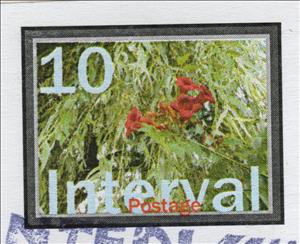Stamp: Dam Batai Province: Interval Red Wild flowers (Fantasy Issues 2005)
Dam Batai Province: Interval Red Wild flowers (Fantasy Issues 2005)
01 January (Fantasy Issues ) within release Dam Batai goes into circulation Stamp Dam Batai Province: Interval Red Wild flowers face value 10 Unit
| Stamp Dam Batai Province: Interval Red Wild flowers in catalogues | |
|---|---|
| Colnect codes: | Col: MM-DB 2005-04/01 |
Stamp is horizontal format.
Design size: 35 x 27 mm Issues originated in 1976 with Burmese themes and values shown is of a Bogus Currency, with no postal value within the then Burma.Also in the issue Dam Batai:
- Stamp - Agav Postage - Coconut palm trees face value 10;
- Stamp - Dam Batai Province: Interval Red Wild flowers face value 3;
- Stamp - Dam Batai Province: Interval Red Wild flowers face value 10;
- Stamp - Dam Batai- Postage Due face value 10;
- Stamp - Lotug Postage - Woman in Fancy Dress face value 20;
Stamp Dam Batai Province: Interval Red Wild flowers it reflects the thematic directions:
A flower, sometimes known as a bloom or blossom, is the reproductive structure found in plants that are floral (plants of the division Magnoliophyta, also called angiosperms). The biological function of a flower is to effect reproduction, usually by providing a mechanism for the union of sperm with eggs. Flowers may facilitate outcrossing (fusion of sperm and eggs from different individuals in a population) or allow selfing (fusion of sperm and egg from the same flower). Some flowers produce diaspores without fertilization (parthenocarpy). Flowers contain sporangia and are the site where gametophytes develop. Many flowers have evolved to be attractive to animals, so as to cause them to be vectors for the transfer of pollen. After fertilization, the ovary of the flower develops into fruit containing seeds. In addition to facilitating the reproduction of flowering plants, flowers have long been admired and used by humans to beautify their environment, and also as objects of romance, ritual, religion, medicine and as a source of food.
Flora is the plant life occurring in a particular region or time, generally the naturally occurring or indigenous—native plant life. The corresponding term for animal life is fauna. Flora, fauna and other forms of life such as fungi are collectively referred to as biota. Sometimes bacteria and fungi are also referred to as flora, as in the terms gut flora or skin flora.


